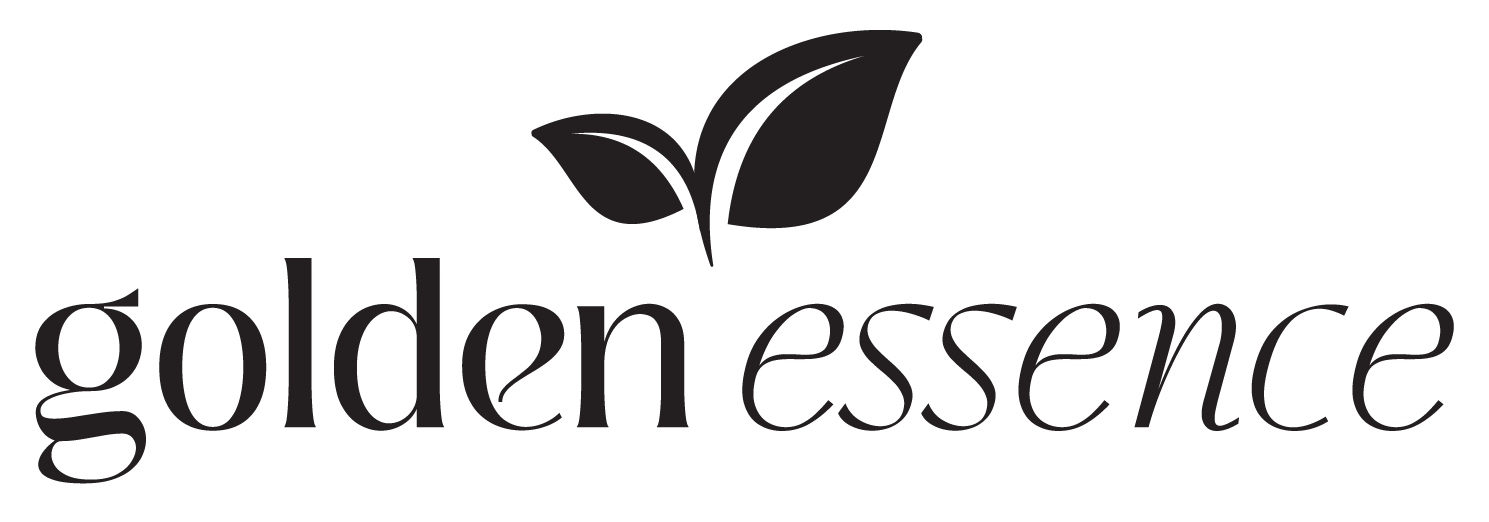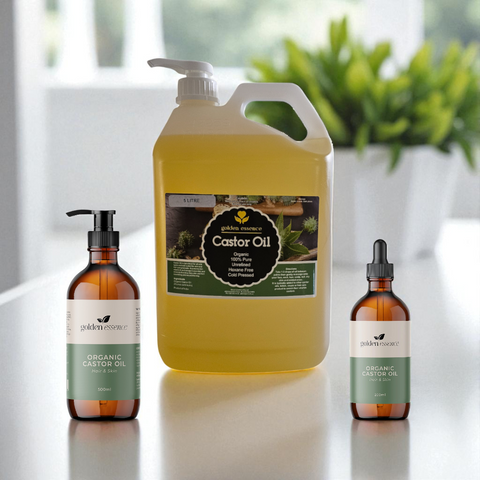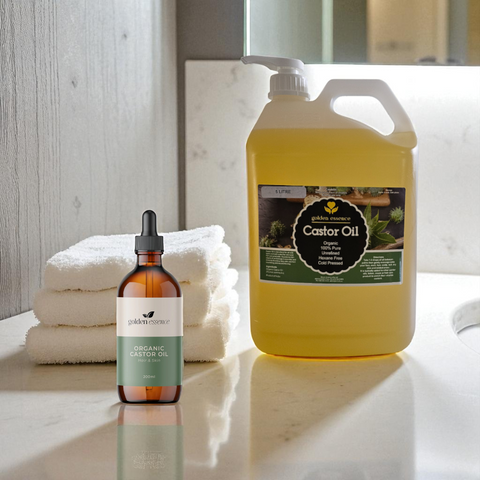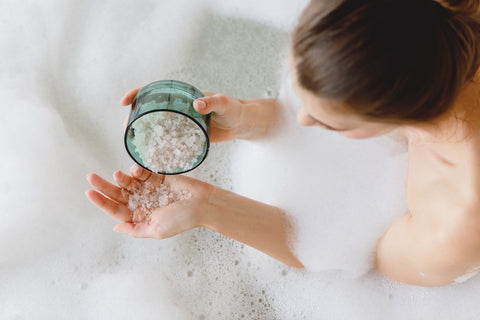Premium Glass vs Food-Grade HDPE: A Clear Guide to Castor Oil Packaging
Short read with practical answers. Prefer the full technical deep-dive? Open the comprehensive guide.

We’re often asked: “Isn’t glass always better than plastic?” For small sizes, amber glass feels premium and looks great on the bench. For 5L–100L, certified food-grade HDPE is the global standard—safe, durable, and far easier to handle. Here’s how we keep your oil pure from India to Australia, in either format.
From India to Australia: How the Oil Travels
Castor oil is cold pressed in India and shipped in robust, food-safe bulk containers (e.g., lined steel drums or HDPE totes). On arrival in Australia, we decant:
- Glass range: bottled fresh into amber glass. For customers who prefer glass-only, this oil has not been stored in HDPE beforehand.
- Mini-bulk (5L–100L): filled into certified food-grade HDPE jerry cans/cubes for practicality and safety.
HDPE vs “Plastic is plastic” — What’s the Difference?
Layman’s version: Food-grade HDPE (the same plastic used for medical products, cosmetics, milk and juice) is chosen because it’s tough, non-leaching. Cheaper, non-food plastics are not suitable for oils.
Lightly technical: HDPE (recycling code #2) is a high-density polyethylene made from virgin resin with no harmful plasticizers. Its crystalline structure, low permeability, and compliance with food-contact standards make it inert with oils under normal storage (cool, dark, sealed). “Unknown” or recycled, non-food plastics can contain additives/residues—that’s where risk comes from.
“Drawing oil” claims, answered
We sometimes hear: “Castor oil is a drawing oil, so it will pull chemicals from any plastic.” Issues arise with inferior plastics and heat/sun exposure. In certified food-grade HDPE, stored cool and sealed, castor oil remains stable and uncontaminated—just as it does in glass.
When to Choose Glass vs HDPE
- Choose glass for smaller volumes, premium feel, and glass-only preference.
- Choose HDPE (1L–100L) for value, durability, and easy handling (no shattering, lighter to lift, better freight efficiency).
Why 5L–100L Mini-Bulk is Booming
Mini-bulk hits the sweet spot: better value per mL than small bottles, less packaging waste, and no need for a 200 kg drum or special equipment. Ideal for households who use castor oil weekly, clinics/spas for treatments, and makers who decant into retail sizes.
Want the references, deeper supply-chain detail, and FAQs we hear most? Read the comprehensive guide.







